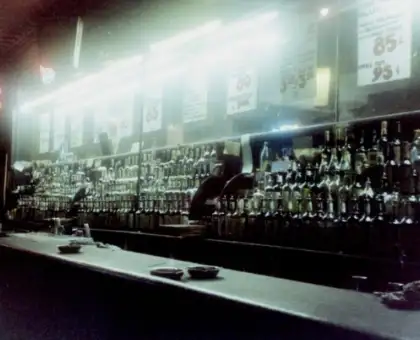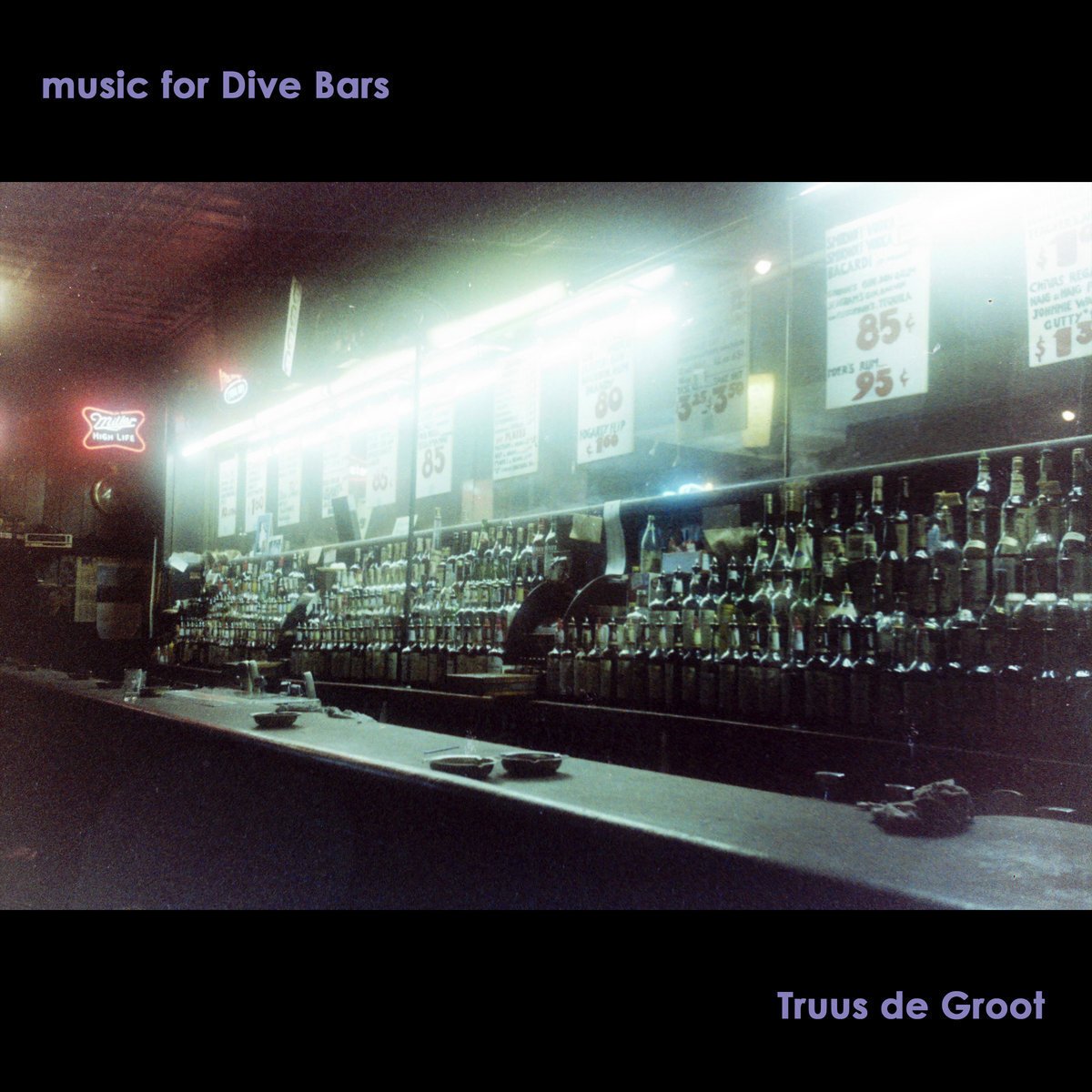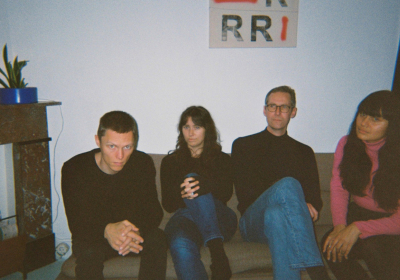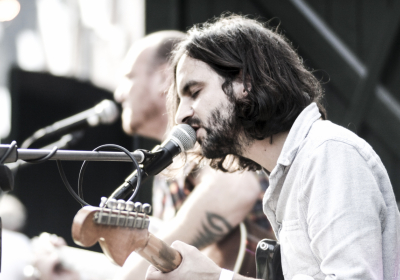
Tekst: Ingrid Enache
Ways of listening
An exploration of contemporary and imaginary listening practices through “Music for Dive Bars”
by Truus de Groot
I’ll dive right in - one day I stumbled upon “Dopamine Dreams”, an experimental electronic album by Dutch avant-garde musician Truus de Groot. Having heard of her Eindhoven roots, her musical legacy and judging by the charmingly retro album cover, I figured Dopamine Dreams must be an underrated iconic album forgotten in the past. My surprise took over when I learned that it was only her most recent album (September 2024), preceded by four decades of prolific music output under her name and other aliases - a minimalist post-punk era with Plus Instruments and even a brief stint as a touring member of Doe Maar. And so began my descent into the rabbit hole that is Truus de Groot’s discography.
I’m sure someone, somewhere could write an entire book about it. Today I chose to focus on “Music for Dive Bars” (October 2023) which I picked not only for its hypnotic synthesisers and adventurous sonic landscapes, but also for the concept and story it builds. By centering the mundane, yet mysterious and often overlooked dive bars, it opens an interesting discussion about how and where we listen to music today.
“Music for Dive Bars” has the masterful ability to put you in a trance, or rather skillfully emulate the trance you’re in after drinking twenty bottles of beer (as the penultimate track of the album suggests). It also formulates a quest in my head, a search for this elusive dive bar that plays excellent synthesiser compositions. Could it be real, or is it a projection of what Truus wishes she would hear at a bar? Could the inconspicuous Eindhoven bar “Caravelle” be the namesake of the album’s opening track, or is it a coincidence? I don’t want to make a case for “good music” versus “bad music”, “good bars” versus “bad bars” - that would be a way longer discussion for another day, and I can already spoil it by saying it’s never as black-and-white as that. For now I just want to discuss music, bars, and the venn diagram where they meet.
If you type “dive bar” into the Spotify search bar, a playlist titled “Dive Bar Anthem” shows up. It’s made by Spotify, not an actual user, which means it’s most likely an algorithmic collection based on my previous listening patterns. And by the looks of this list filled with LCD Soundsytem and Pulp, it’s true - this is what Spotify thinks I would hear in a dive bar, a fantasy removed from reality that only serves to keep me hooked to its service. I doubt this sonically curated dive bar actually exists, at least I’ve personally never heard Fugazi at my downstairs pub.

There’s this term called “functional music” which gained popularity in the context of the streaming age. Playlists on Spotify are created not to encourage discovery, but rather to serve specific purposes. You might have also heard “French Jazz Cafe” while ordering a coffee somewhere, or “Hype Workout Mix” at the gym. The platform delivers playlists for specific goals and moods, thus turning music into a product meant to be consumed as an aid to your main task (chatting with friends, eating dinner, studying, working out etc). Could we ever dream that listening to music would be the main act we do, collectively or alone?
Enter listening bars. Passion and care for hi-fi sound is nothing new and comes from a rich culture of vinyl bars in Japan. In recent years this concept that emphasises (analog) music and quality sound has been taking over Europe’s bars. Finally we can imagine and even visit spaces where listening is the main event, we can picture listening to all the details and dust particles of an ambient record played in a sonically treated room surrounded by friends and drinks. But the barrier to enter these places is way higher than in the humble dive bar; investing into a good sound system and the presence of a concept are great excuses to drive the prices higher and create exclusivity, whether artificial or deserved. Instead of twenty bottles of beer we choose to only buy two, instead of staying out until the early hours we go home to save money, and so the quest for Truus de Groot’s all-consuming, dramatic and peculiar dive bar continues.
If Spotify is urging us to imagine, with the aid of their generated playlists, a mindset of productivity, concentration and streamlined functionality, then “Music for Dive Bars” is fighting against this specific attitude. It fleshes out a dream-like world where listening is important, regardless if it’s on a hi-fi speaker or a refurbished jukebox. Perhaps I don’t need to search for Truus’s specific dive bar, but rather let the atmosphere of this record follow me in every bar I go to.
Some decades ago, Brian Eno dedicated an entire album to airports and designed ambient music intended to fit their cold, uninspiring waiting rooms. I’d like to believe that Truus de Groot follows in Eno’s steps and creates electronic music that is not functional, but rather incubational -
sounds that create and open up new dimensions, that allow for fantasising new spaces with their own unique sonic footprint, instead of delivering the service of soundtracking the existing and at times disappointing reality.



